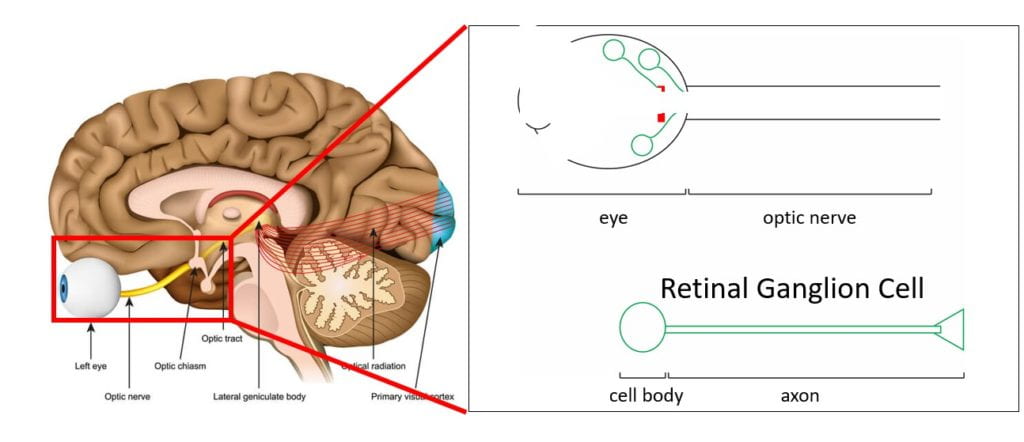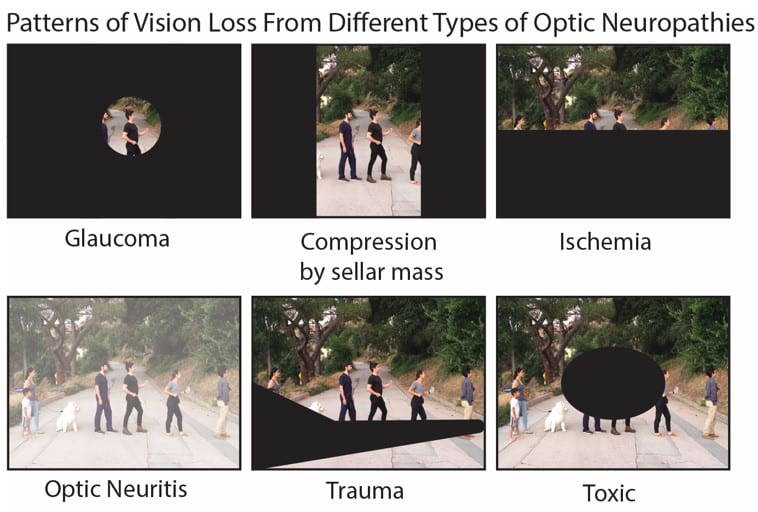Restoring Vision
Our multidisciplinary team leverages the expertise of neurobiologists, neuro-ophthalmologists, cell biologists, engineers, and electrophysiologists to develop electric field application into a therapy that will regenerate the optic nerve and restore vision to millions of patients world-wide who are blinded by glaucoma and other diseases of the optic nerve.
What type of vision loss are we aiming to treat?
Our work aims to treat blindness that results from damage to the optic nerve. The optic nerve is the cable that relays images perceived by the eye to the brain. The optic nerve is made of a specialized neuron called the retinal ganglion cell (RGC). The optic nerve is selectively damaged in a number of conditions shown below including glaucoma, compression such as from a tumor, strokes to the eye, inflammation such as that seen in patients with optic neuritis, trauma, and even poisons or genetic diseases.
Blindness Results From Damage to the Optic Nerve

Why does damage to the optic nerve lead to permanent blindness?
The cells that make up the optic nerve, retinal ganglion cells (RGCs) have a poor capacity for self-repair. Instead of repairing themselves, RGCs degenerate when damaged. This leads to permanent loss of peripheral or central vision as simulated in the samples to the left.

How can vision be restored?
Restoring vision is going to require the development of therapies that can
- Promote RGC survival
- Direct RGC axon regeneration
- Facilitate RGC synapse formation with targets in the diencephalon.